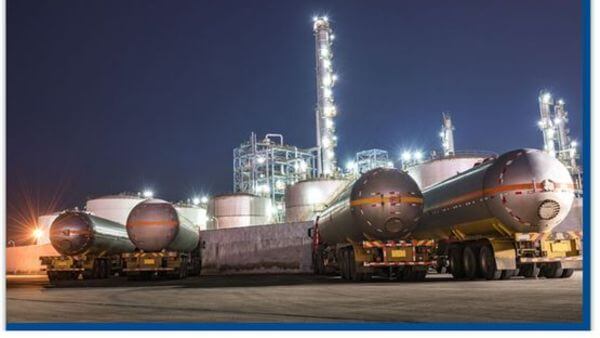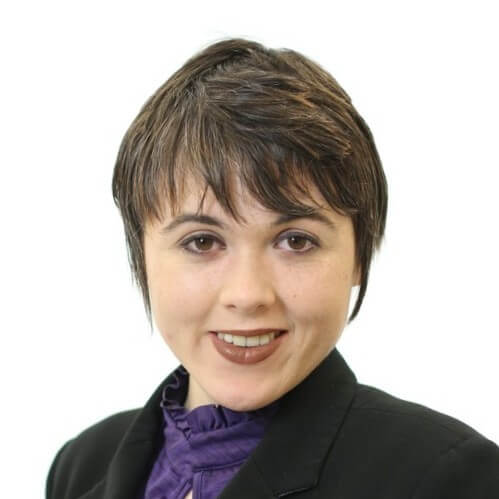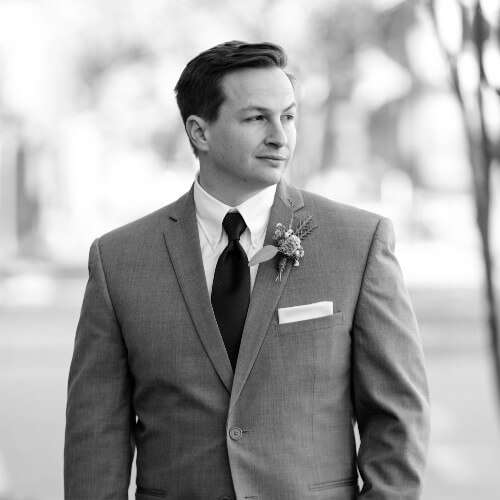 Today’s terminal operator faces many pressures from the market environment. Customer expectations have increased due to the rise of e-commerce. This trend is encouraging operators to provide faster, transparent service to their customers, while ensuring repeatability across their workflows. Operators need to maximize terminal throughput meet these higher expectations. Improving customer support and order transparency is becoming a common and necessary challenge for these operators in the tanks and terminals Industry.
Today’s terminal operator faces many pressures from the market environment. Customer expectations have increased due to the rise of e-commerce. This trend is encouraging operators to provide faster, transparent service to their customers, while ensuring repeatability across their workflows. Operators need to maximize terminal throughput meet these higher expectations. Improving customer support and order transparency is becoming a common and necessary challenge for these operators in the tanks and terminals Industry.
“Surprisingly, many terminals are still operating without an integrated terminal management system to plan and manage loading and unloading operations and – more importantly – to provide visibility and management of the terminal’s inventory and commercial activity. Terminal management software is not new, but many terminal operators do not realize the value implementing modern terminal management software can provide for their operation and overall business.” – Aaron Boettcher, Vice President Marketing at Emerson Automation Solutions, Remote Automation Solutions
Relying on the tradition manual operations instead of highly automated operations can translate into missed orders, slow response times, lack of onboarding knowledge and missed opportunity for optimizing performance.
In this episode of our Optimizing Terminal Capacity podcast series we interview Thomas Nichley, an expert in tank gauging and custody transfer. He explains how using Emerson’s TerminalScheduler helps drive capacity improvements through the automation of standard operating procedures, and with better scheduling tools for achieving greater labor and asset productivity.
Podcast: Play in new window | Download (Duration: 14:46 — 9.1MB) | Embed
Visit the Optimize Terminal Capacity section on Emerson.com for on ways to maximize capacity yield and meet Top Quartile benchmarks through greater volume deployment, inventory turnover and revenue capture.
Transcript
Jim: Hi, everyone. I’m Jim Cahill and welcome to another podcast in our Storage Terminal Capacity Series. Today, I’m joined by Thomas Nichley to discuss ways to achieve greater labor and asset productivity through storage terminal optimization. Welcome, Thomas.
Thomas: Thank you, Jim.
Jim: Let’s start by, can you share some of your educational background and your career path to where you are today managing sales as part of Emerson’s Energy Solutions Enterprise Liquid Terminal Products business?
Thomas: Sure, love too. Background was a local here in Houston, graduated from U of H [University of Houston], went straight into the oil and gas industry as an expediter. And, you know, worked my way up into sales for one of the local distributors here doing valve actuation. And that’s how I was able to move into Emerson under the Bettis-Shafer group. So, started my midstream life there with high pressure actuation sales for natural gas pipelines. And from there, I was able to migrate into instrumentation for Rosemount Tank Gauging, which got me into the terminal space. And once there learned a lot about tank gauging, and custody transfer and a lot of the business background as well as operational background for terminals, which then moved me into an opportunity to join ESI, or Energy Solutions, with Emerson and start working with the liquid terminal products business, focusing on basically the market of third party liquid terminals and hosting solutions for optimization and ordered cash.
Jim: Well, that’s a nice varied background. And now, with that experience in the midstream industry, and I guess, tank farms in particular, how do you see that industry space evolving?
Thomas: Midstream industry, or tank farms in particular, are evolving because a lot of them came out of being refinery tank farms originally, and then evolved into being able to move products through products and services for customers that ended up selling them to the third party terminals. So, in the world that we live in with Amazon, customer support and order transparency are critical now more than ever. And in doing so, I think a lot of terminals have to look at their systems they have in place, which are mostly manual in operation and find ways to move them to adapt to being able to streamline workflows, automate information, and be able to portray that information to customers, most specifically, inventories, and orders. So, that’s kind of the big evolution there, is the drive to take care of customers, while being transparent in what’s happening at the terminal today.
Jim: That’s interesting. You said a lot of them are very manual in what they do today. So, how is scheduled planning typically done today?
Thomas: So, a funny story I have is, one time I was talking to a specific customer or an opportunity and I met with some of their schedulers. And I said, “How do you guys go about scheduling today?” And one guy pulled out his pad of paper and said, “I look at what the customer orders coming in today are, look at what the nominations would be. I start writing them down. And I start planning them out based upon what product it may be, what tank it’s coming from, and what location it’s sending to whether it was truck, rail or dock. And then I plan it that way on a pad of paper.” And then I asked them, “Well, what do you do if there’s a change in the order or the order got cancelled? Or there was an issue with the system that the order had to get pushed?” He ripped a piece of paper off and said, “I start all over again.” That was like, wow, that’s very manual. Another time customers or I saw a green board of Velcro where they moved the names of the docks and the locations.
They moved it around the green board showing what the order was doing, what product or customer it was and what location it was going. And that was another way. And then of course, there’s whiteboard. And then of course, more recent, the spreadsheet, where they’re using a spreadsheet that has some macros or some algorithms built into it, where they’re able to move it around and adjust it. And then the question is, “Well, what happens if the guy who knows how to use this retires and you break a cell?” “Well, we’d be in trouble, or we’d have to figure out how to fix it. So, we don’t use a lot of those cells for that reason or we just protect the spreadsheet and keep people from doing it.” So, there’s a gradual movement out of the manual system by moving into a spreadsheet, but even still, it’s very manually input, you’re still not capturing what’s really happening within the terminal, I guess you would say, in a snapshot of what’s happening. And it’s all just driven by communication, input emails, and phone calls.
Jim: Well, definitely sounds like there are opportunities to improve if you’re starting over with a piece of paper, or erasing a whiteboard and putting things, sounds like there’s opportunities to drive some capacity improvements. So, what are some of the ways that you can drive capacity improvements through better scheduling?
Thomas: The key is going to be driving optimization of your lineups. And the reason I say that is we track line fill with TerminalScheduler. And that’s paramount, because knowing what was in the pipeline from a pre-movement, or post-movement is critical because that is going to be able to allow the scheduler to see what has happened, or what’s going to happen, and how it will impact the next order, and how that lineup will work. Especially in very…a lot of terminals have very complicated manifold systems; you’ll have over 100 MOVs in a pit and they’ll go every which way. It’s a basically a spaghetti bowl of pipes. So, being able to give your labor or your operations the ability to pre-plan the movement, select the lineup, base it upon whatever constraints may be there. Say you have a maintenance constraint, you have a pump down, you have a valve out of service, or you have a tank that’s being shut down or being cleaned, you need to know these things ahead of time. And that’s what the system will allow.
So, that optimization can drive a lineup that is optimized to take the quickest path forward to get to the delivery point in the most efficient time. Then you can project that to your operations, so they have a plan of action. And the great thing about the system is it only takes a couple of seconds to design that and do that based upon what your number of orders are, what your products are, product compatibility. And the other big key factor out of this is reducing or eliminating altogether contamination, because we know contamination is a big financial killer. For if you get a tank contaminated, that’s hundreds of thousands of dollars of product that’s just been lost. If you move diesel into gasoline, that’s a bad deal. So, these are the things we want to be able to reduce. And we call it fat finger proofing or human error proofing. But really, it’s just getting better optimization, it’s using information that can help you move and operate quicker and more effectively, thus increasing the yield of your terminal because you’re able to get a few more movements out because you know how your day is going to plan.
Jim: Yeah, it sounds like you’re even automating some of the standard operating procedures just so those mistakes aren’t made that can be very expensive in terms of just solving the issue as well as, you know, the time lost having to deal with it and get back on track. So, you had mentioned TerminalScheduler as a way to do this automation and manage things and deal with the changes that come in. So, how does the TerminalScheduler integrate with other platforms and systems to drive these improvements in efficiency?
Thomas: Yeah, it’s the system that can interface to your SCADA system, thus pulling the historian from your PIs or pulling history from the PI server, and being able to use that information to derive what’s happened in your lines, what’s happening in your tanks. But it also can connect to customer nomination portals, such as T4, Synthesis and others to be able to pull those nominations in that create the orders that need to move through the terminal. So, now you’re getting some streamlining of information coming into the tool, and you’re streamlining information that’s gonna be projecting out. Because one thing we’re working towards is to be able to make this project out operational or work orders to say, a handheld device for your field operations guys to get their lineups ahead of time. This is something we’re working with right now with a customer to be able to do. And I think that’s, once again, driving information to give you the ability to do more within your terminal.
And I think that’s why I see it as we’re at the beginning of the evolution. And I think terminals aren’t doing that right now because everything is work order and verbally driven and not so just sending information, receiving information, validating, checking and balancing. So, these are key attributes that terminal schedule will be able to provide when interfacing to other tools in the field.
Jim: Yeah, it sounds like a lot of opportunity in there to improve those processes. I was just curious of folks, maybe anecdotally, that have gone down this path from a very manual approach to incorporating some of these tools for automation. Any stories you can share on what they’ve seen as far as improvements?
Thomas: Anecdotally, I think a lot of times when we show this product and we get customers in front of it, they immediately see the value when we show lineup optimization. They immediately raise their eyebrows and go, “That’s a game changer.” Because what I think a lot of customers think about when you bring in some of these systems is you’re bringing a system in that might replace them, or might not displace them, but kind of, yeah, displace them. And I think what that does is it makes it a little off putting, but what these schedulers see is, “This is giving me a better tool in the toolbox. And giving me this capability that’s repeatable, that’s in a system, that is I can look at that has a GUI that basically has a digital footprint of my terminal, that has a visual representation, but still giving me the ability to have a spreadsheet view of what my orders are or what the nominations are, is perfect.” And then we even go as far as giving Gantt chart and I tell you what, a lot of people jump on that Gantt chart that you can drop in place as you do your movements. And it can do block outs on what’s happening, say you got to dock out a line.
So, I’m getting a lot of feedback that schedulers basically look at this as the better tool in the toolbox to help them do their job. That they will be able to get more done in a day because they’re not going back and forth on emails on the phone with operations, you know, having to double check and verify because things are being validated as you plan. So, these are a lot of the feedback I’m getting for when we show this.
Jim: Yeah. And it just seems like if they’re running more efficient optimized operations. It just makes, you know, the people, their working more valuable. And the things they do, that they’re not spending time on activities that aren’t using their brain as much more into just making it a lot more efficient. That sounds like a much better way. So, I’ve learned a lot in this. Thomas, where can our listeners go to connect with you and learn more about opportunities for better scheduling and more efficient operations?
Thomas: Best way to find me is gonna be on LinkedIn. All my contact information is listed on it. So, just reach out to me, message me. My cell number’s on there, you can text me. I’d be more than happy to sit down and talk a little bit more and have a conversation about how we can help you schedule a little bit more efficiently.
Jim: Great, and I’ll leave a link to your LinkedIn profile in the transcript of this. And everyone, also make sure to visit the Optimized Terminal Capacity section on emerson.com for more on some of these technologies and solutions that will help drive better terminal operations and improve performance. Thomas, thank you so much for joining us today.
Thomas: Yeah, it’s my pleasure, Jim. Thanks for having me on.
End of transcript






